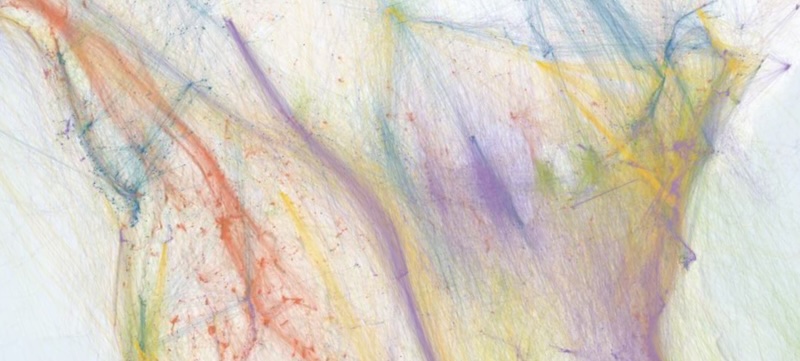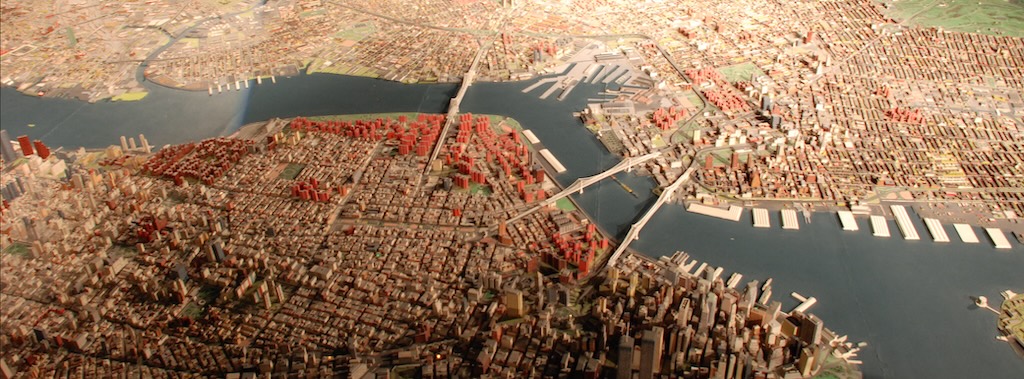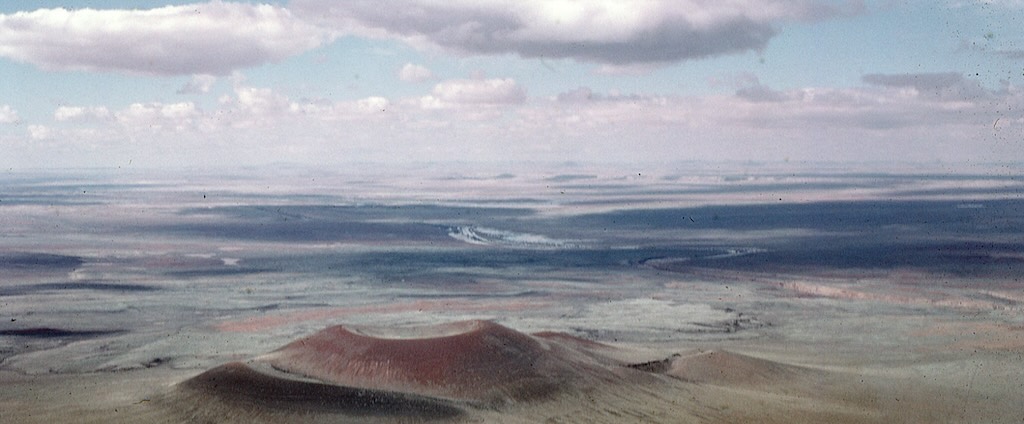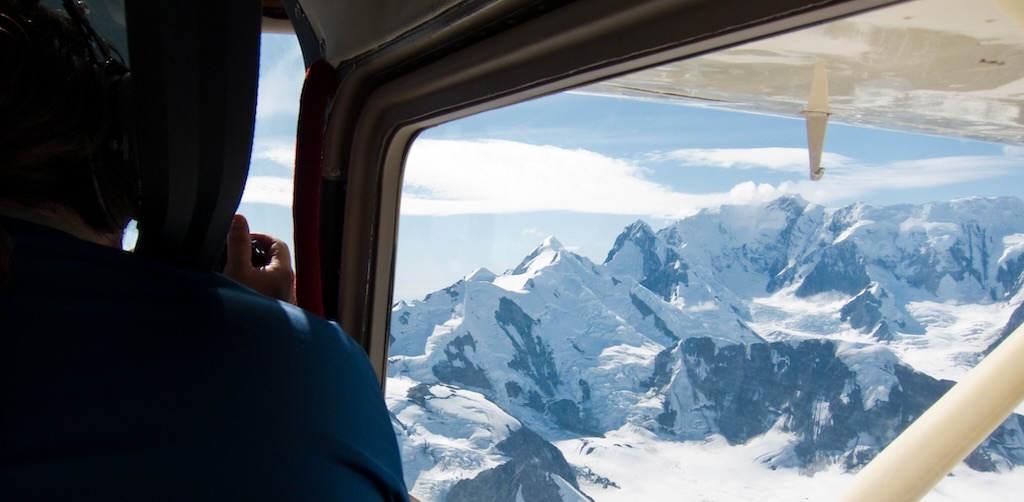Where I'm At
Still thinking about place.
I’ve been heads-down for a few years, as we all collectively got the wind knocked out of us by history, but I’m trying to come up for air more regularly.
If we met previously, it was likely in New York. I’ve since moved to the edge of the woods by the ocean in the Pacific Northwest, which is my native biome, and I haven’t been back east or nearly anywhere else in years. I miss you all.
 migration paths from the Bird Migration Explorer, image by Erika Knight
migration paths from the Bird Migration Explorer, image by Erika Knight
I’m still making unusual maps online. Right now I’m working on the Bird Migration Explorer for the Audubon Society, which I’d known as a very cool bird tracking map, but which also turns out to be a massive data-collection initiative intended explicitly to guide and drive policy, increasingly relating directly to climate concerns. It’s sobering.
Bird migration tracks sketch out something like the invisible grain of an ecosystem. Migration patterns are incredibly sensitive to conditions including water levels and salinity, air and sea temperature, and other direct influences, but also concomitant second- and third-order causes like insect populations and the continent-wide undulations of the jet stream and deep sea currents.
The interconnections between these phenomena make the specificity of any one field of study seem (while necessary for all the right empirical reasons) incredibly myopic by comparison. All species are indicator species. All science is climate science.
I’m glad to be working on something climate-adjacent. I’d like to do more of that.
God’s Eye View
I once spoke at the Queens Museum about how, in the 1960s, Robert Moses built the Panorama of the City of New York as a miniature prototype, planning tool, and trophy. This was about ten years ago, during a spike of zeitgeisty appreciation for the imperialist nature of modeling things, in a Seeing Like a State, Command and Control, OODA Loop kind of way.
 the Panorama, credit Flickr user ‘joeshlabotnik’
the Panorama, credit Flickr user ‘joeshlabotnik’
That’s all been completely overthrown (for now) by machine learning, which is a massive loophole in the tech equivalent of the social contract – a reprieve from the duty of care. Let the models make themselves! Generative AI in particular feels like an explicit attack on our ability to synthesize and communicate ideas.
(Google Ngrams says that “holism” peaked in 2015, and “systems thinking” in 2020.)
I’ve been having a lot of conversations with Erin about the necessity of care, especially relating to large existing social networks, and how letting capitalism drive the bus has significant far-reaching negative effects. It’s not difficult to connect the dots between Facebook’s network colonialism and the genocide of the Rohingya people in Myanmar, but you have to care about all the scales at once for it to make sense.
(Tangentially, and in the spirit of freeing ourselves from the bargain we’ve struck with the likes of Facebook, she just published a very deep investigation into governance models in distributed social networks – read it here: https://erinkissane.com/fediverse-governance-drop)
They’re not easy problems. The scale of our networks is beyond anything we can easily grasp. Down in the weeds, you see nothing, and the 30,000 foot view is far too high – details are elided completely. Attempting to overlay the one over the other generally creates a third, worse thing.
Time and Tide
I don’t yet know how or whether this is solvable, but I’ve been very slowly scratching an itch which starts like this:
Certain altitudes in small aircraft feel as though they reduce the problem of global and regional context to an approachable scale, but those are also the scales which are hardest to absorb. The views of a city from its tallest towers are notoriously vertiginous. Those are the scales with the most nameable visible objects. I think that’s fascinating. (And I’ve written about similar things before, at length.)
 Roden Crater, credit Dale Nations via the Arizona Geological Survey
Roden Crater, credit Dale Nations via the Arizona Geological Survey
James Turrell built his Roden Crater looking specifically for something at 600 feet of elevation, in order to take advantage of a kind of optical illusion that Antoine de Saint-Exupéry described. In Turrell’s words: “…from 600 to 3,000 feet up the earth looks as though it curves the wrong way.”
What follows is my own interpretation: There’s some facet of our sensorium which accounts for the horizon, and our relationship to it, and puts what we can see within arm’s reach and slightly below us. But just as you don’t get dizzy until you stop spinning, you don’t notice this until the horizon is dislocated, and the mechanism begins to work backward.
The horizon is hard-coded in. Things beyond our reach don’t or can’t exist in the same way. Computers, and the internet, are (so far) the ultimate realization of the “world at your fingertips” but to what feels to me to be an intractably impoverished degree. Distance, and its derivative, time, are totally dissolved.
I still don’t think we have a good way to appreciate what’s happening to us in the context in which it’s happening.
Turrell describes part of his artwork as the process of “knowing with the body.” In his view in order to see a thing properly you have to go to where it is and look at it.
I’ve been looking at a lot of things on my phone. It’s not the same.
 Wrangell-St. Elias, credit Flickr user ‘denali’
Wrangell-St. Elias, credit Flickr user ‘denali’
In his book Terre des hommes Saint-Exupéry states that “The airplane has unveiled for us the true face of the earth.” Satellites get all the credit lately, but I have never felt so suffused with an intimate, all-encompassing knowledge of my surroundings as at 4000 feet in a Cessna. Typically, you must climb a mountain to get this view, but once you have, the parallax afforded by motion is unavailable, and what you see is a painting, a flat panorama in a battleground museum. Small aircraft transform large-scale factors into something graspable.
Saint-Exupéry goes on: “For centuries, highways had been deceiving us” by distracting us with walking-speed detours and local minutiae. “…We have from the beginning of time embellished the picture of our prison. We have elected to believe that our planet was merciful and fruitful.” He wrote this in 1939.
He then writes of how geologic time is revealed at altitude: “And then, only, from the height of our rectilinear trajectories, do we discover the essential foundation, the fundament of rock and sand and salt in which here and there and from time to time life like a little moss in the crevices of ruins has risked its precarious existence.”
He describes the tides as peristalsis.
Distance Learning
I grew up far away. I moved far away from there. I’ve moved away a dozen times. I lived near friends a few times, briefly, and loved it.
I live now at the end of a country road, at about 200’ of altitude. I can see the water. I know where the tsunami will run.
I love to sit in the woods. I’ve been reading more often again. Once, Saint-Exupéry “circled the airport for an hour after returning, so that he could finish reading a novel.” I deeply empathize.
So much of what happens depends on factors that are difficult to talk about, and impossible to see directly. Supply chains and weather patterns and local water policies affecting the water levels in the marshlands, affecting bird migration in the Great Salt Lake Basin, human migration in Central America, the invasion of Ukraine. The Koyanisqaatsi-level scales of anthropocentric influence. I imagine a cartoon whiteboard Earth on which to sketch these things, to feel their causes with the body.
They call this being situated, but I think there are better phrases. It’s the gestalt, the set and setting. It’s psychotopography, with ship traffic. I’m workshopping it.
I have a horror of becoming an architecture astronaut, so far removed from the minutiae that I can’t see it anymore, collecting metaphors and assembling grand unified theories to be intoned over dinner. I console myself by noting how often I still find myself in the weeds. Right now I’m learning a lot about birds. There are some really great birds.
I do need to remember to move around more while I’m perusing views from space, to keep the blood flowing. If you happen to be at XOXO this weekend and see me or my weird blue Japanese 4x4 minivan trundling by, flag me down, let’s hang out.